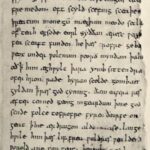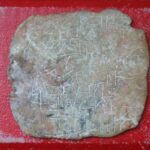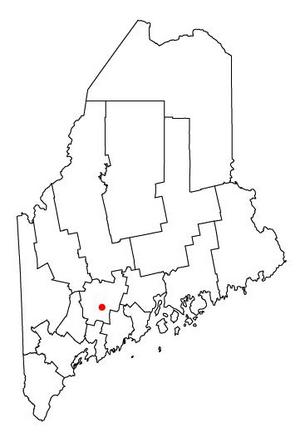From the research I have done, I hope to better understand Puerto Ricans and African Americans as a whole. To see a fuller picture of our pluralistic society and apply it to my teaching in the classroom. Many tend to base their opinions about people, politics and religion on things they have seen on TV sitcoms, news and cartoons. Here is an example of a poem written by a Puerto Rican student that describes how he feels about the worlds views.
“I am a heathen they say
Only because I resist their vocation
They condemn pagan. They curse savage
Of what I believe in shall I not be condemned
Because in there lies my trust my faith And
condemnation shall not persevere” (Tswiio, 2003).
Everyone’s life is dominated by culture, no matter where people go they can see different types of cultures. Here in Central Florida we find Caucasians, African Americans, Puerto Ricans, Muslims, Chinese and many other subcultures. I have decided to focus on African American and Puerto Ricans because they are more dominant in this area.
I have learned a great deal of information from my research about these two cultures. I ‘ve always thought of African Americans as either very family oriented or more involved with drugs and gangs. I have made many of these assumptions based on how African Americans dress and how they talk . I personally have noticed how some African Americans males use a lot of slang when they talk, as well as how the females are very outspoken and not afraid to speak their minds.
To me, Puerto Ricans seem different than other Hispanics, maybe because they are decedents of African slaves and Spaniards. I have noticed how proud Puerto Ricans seems to be of their culture, hanging flags in their cars and on their homes. Puerto Ricans seem to be very friendly and welcoming people.
This research paper is important to me as a future teacher, because I personally have a hard time understanding why some cultures act the way they do. This paper will help to eliminate any racial prejudice I may have about these subcultures. By researching and writing this paper I will also be able to help my future students better understand each other.
Material and Methods
When I began searching for material for this paper, I kept in mind that the purpose of this paper was to better understand Puerto Ricans and African Americans as a whole, to see a fuller picture of our pluralistic society and apply it to my teaching in the classroom. I visited my local library and they had nothing, except information on the Civil War that included African Americans because of the slavery.
So then I visited surrounding county libraries and found several books. I also searched the internet for different book titles and ordered them via interlibrary loan. I couldn’t find any books that had recently been printed about the subcultures that I selected. Most of the information I obtained is from the early 80’s and 90’s.
I then turned to the internet., using the Google search engine. I Searched for information about religious beliefs and heritage. The information I obtained here was more recently updated than the books I located. I also used the internet to collect copies of Supreme Court documents that involved African Americans and Puerto Ricans.
I think the information from the internet may be more helpful because it, isn’t as old as the information from the books. The Supreme Court documents will also be very helpful to show what rights whites had that others didn’t. I organized my information by first creating a concept map. I then broke all the information I had gathered into groups, religion, poetry, quotes, family, and history. I then added a section to my concept map for each. I will focus most of this paper on family life. The book Ethnics America, by Herda was the most beneficial writing this paper. It was my primary source for both cultures.
Description of African American Culture
African Americans have also had many battles with the school systems in the United States. One very famous battle that went all the way to the Supreme Court, was brown versus the Board of Education. In this case Mr. Brown challenged school segregation “The Brown decision initiated educational and social reform throughout the United States and was a catalyst in launching the modern Civil Rights Movement. Bringing about change in the years since the Brown case continues to be difficult. But the Brown v. Board of Education victory brought this country one step closer to living up to its democratic ideas” (Brown v. Board of Education, , 1954).
African Americans are very family orientated people. ” The church is truly the heart of the black society” (Wright, n.d.). According to Mother Wright African Americans feel safe in their church. They feel like they can be themselves and have nothing to hide. “Most African Americans are Baptist”(Lugira, 1999). African Americans teach their females to take care of themselves. This may be why I think that they are very outspoken.
African American families have some of the same family values as White American. However, African American families have some idiosyncratic features relating to the timing and method of marriage and family structure, gender roles, parenting styles, and strategies for coping with hardships.
There are three different reasons an African Americans family is different from that of a White American family The first reason is incorporation into family life of culture. The second reason is adaptation to slavery. The third reason that African American families are different is because of discrimination and economic inequality.
In West Africa family life is tightly knitted into the extended family. Marriage is a contractual agreement between the whole family not just the men and the women. The whole family or clan tightness can be seen as the forerunner to the extended family structures of today African American families.
During slavery, African Americans were striped of their of identity, language, and the culture of their homeland. This was done by separating family members. But African Americans still joined together in groups that they called their family. This is why once slaves gained freedom they saved money to buy their children and wives back.
Something’s that shape the family of African Americans today is racism, poverty ,urbanization and immigration. African Americans females are not considered family until a child is born. Most African American women have a child out of wedlock. Today 56% of African American children are born to unmarried mothers.
” Over the past decade marriage rates have decreased in the African American population. Experts attribute this decrease to factors including a of marriageable African American men and to structural, social, and economic factors”(Herda, 1991).
Description of Puerto Rican Culture
Puerto Ricans started to migrant to Florida in high numbers in twentieth century, when they became part of the United States. The first to leave Puerto Rico were college students and cigar makers. After World War II a great boom of Puerto Ricans began for three reasons. The first reason was because the economy was still weak and underdeveloped in Puerto Rico. The second reason is that there were many jobs for unskilled workers on the mainland. The third reason for this boom was air travel expanded after the war ended, this meant that Puerto Ricans could now fly over to the main land.
The central religion of most Puerto Ricans is the Roman Catholic . Catholics are known for their belief and worshiping of the Virgin Mary. They are also known for their strict rules. Catholics are the lead of the Pope, who is said to have direct communication with God.
Puerto Ricans who have left the island still maintain a strong identity with Puerto Rico. Puerto Ricans still speaks Spanish, and prefer Puerto Rican foods and their own music. Many Puerto Ricans hang their country’s flag in their car and home.
When children are born to Puerto Rican families they are treated different from the moment they arrive. Puerto Ricans prefer to have male babies over girls. This is because the father feels that his virility is extended by the birth of a son. Boys are preferred over girls, because many Puerto Ricans believe that boys are easier to raise. They believe that boys can take care on themselves.
“Men are often teased about their genitals if they a have a daughters. Puerto Ricans believe that the penis is beautiful while the female gentiles are ugly. Boys are taught at a young age that sex is for men and men are made to have sex:” (Larsen, 1989). “Sex is often left as a surprise to young women. One of the many surprises thrown to them at 14 or 15 when they might marry. It seems that if one is knowledgeable about sex, it might indicate a previous experience “(Lopez, 1974).In the Puerto Rican family the father is the head of the household. He is the decision maker and the provider. The mothers role is to do all the cocking and taking care of the children. Children are to do chores and are responsible for school and gardening.
“Puerto Rico is one of the few major parts of Latin America where political stability and government by law under completely democratic processes are accepted, the immutable, order of society” ( Glass, 1975). Just as every where else uses television to make judgments about people and politics the same is true here. ” The El Dia of Ponces is just about the only newspaper on the island”(Lewis, 1963). A cause that had a major impact on the Puerto Rican society was “Puerto Rico v. Branstad. In this case decision by the Supreme Court of the United States ruled unanimously that Federal Courts have the power to enforce extraditions based on the Extradition Clause of Article Four of the United States Constitution” (Puerto Rico v. Branstad.1987).
First I’ll review some of the similarities and then we will move onto the differences of the two cultures.Throughout history African Americans have been through a great deal of life changing experiences. “Blacks were singled out for slavery for many reasons. One being that the South needed a cheaper way of taking care of crops. The other reason is that Europeans looked down at African Americans” (Herda, 1991)
Similarities and Differences
Both African Americans and Puerto Ricans are very religious. The church and the family are the heart of African American society. While religion and food play an important role in the Puerto Rican society. African Americans and Puerto Ricans are both very proud of their heritage. Puerto Ricans show this by hanging their country’s flags in their car. African Americans show their pride by marching in prides and civil rights movements. Both African Americans and Puerto Ricans want to be considered a true American with equal rights. Both African American and Puerto Ricans face racism still today.
The African American family can be very large and is very import to African Americans. African Americans were brought to the United States years ago for slavery against their will. African Americans have had to fight to stop segregation. African Americans not only use the church as a place of worship, but a place to feel safe and free.
Puerto Ricans migrated to the United States when their country was purchased by the United States. They were not brought here against their will. Puerto Ricans do not have to pay taxes, while staying in Puerto Rico Unlike African Americans, Puerto Ricans had a chance at getting a good job and being paid when they first migrated to the United States. Puerto Ricans tend to favor foods of their country, such as flan and chicken and yellow rice.
Conclusion:
All over the world people are confronted with racism and hate for being different. America is supposed to be a land of opportunity not the land of discrimination and discouragement. If people would stop using television sitcoms as a source of judging people and start respecting each other, we all may have a better chance at succeeding. From my research I now better understand Puerto Ricans and African Americans as a whole. I am able to see a fuller picture of our pluralistic society and apply it to my teaching in the classroom.An environmental sciences project would be for students to study and compare ecosystems, niches and habits of their country. I read that Puerto Ricans have little knowledge about sexual reproduction, this is also true for lower income students. It would a good idea to do a sex education unit for all students to help them better understand how their bodies work.Another project for students studying earth science might be to research a geologic feature from their home country. Students could then share and compare how and why some countries may have different geological features.As a secondary science teacher, there are many ways I can incorporate what I have learned into the classroom. If I were doing a unit on genetics, I would be able to have students research their family tree and look for treats that are dominant in their family. Students could then compare the genes that cause these traits and see if they are more dominant in certain cultures.Through my research, I have realized that these two cultures have many things in common; while on the other hand they are completely opposites from each other. There are many differences and similarities between African American and Puerto Ricans.
References:
Brown v. Board of Education, 347 U.S. 483 (1954). Retrieved January 20, 2008
from http://www.nationalcenter.org/brown.html [Government document]
Glass, A. (1975). Puerto Rico Living. San Juan, Puerto Rico: Puerto Rico Living. [Secondary]
Herda, D. (1991). Ethnic America, The Southeastern States. Brookfield, CT: The Millbrook Press.
[ primary source, interlibrary loan book]
Larsen, R. (1989). The Puerto Ricans in America. Minneapolis ,MS: Lerner Publications Company.
[Primary, library book]
Lewis, G. (1963). Puerto Rico, Freedom and Power in the Caribbean. New York, NY: Harper Torchbooks. [Secondary, interlibrary loan book]
Lopez, A. (1974). Puerto Ricans Puerto Ricans: Studies in History and Society. Schenkman Publishing Company: New York, NY [Secondary, book from local book store].
Lugira, A. (1999). African Religion. New York, NY: Facts on File, Inc [secondary sources, interlibrary loan book]
Puerto Rico v. Branstad, 483 U.S. 219 (1987). Retrieved January 20, 2008, from
http://supreme.justia.com/us/483/219 [Government document]
Tswiio, R. (2003). University of Botswana English Department. Retrieved January 20, 2008, from Julia de Burgos Web site: http://www.thuto.org/english/courses/eng434/botsjdb.htm [Secondary]
Wright, M. (n.d.). Church. Retrieved January 20, 2008, from Sunday Morning Celebration Web site:
http://alpha.dickinson.edu/departments/amos/mosaic01steel/je/church.html [internet, Primary]



